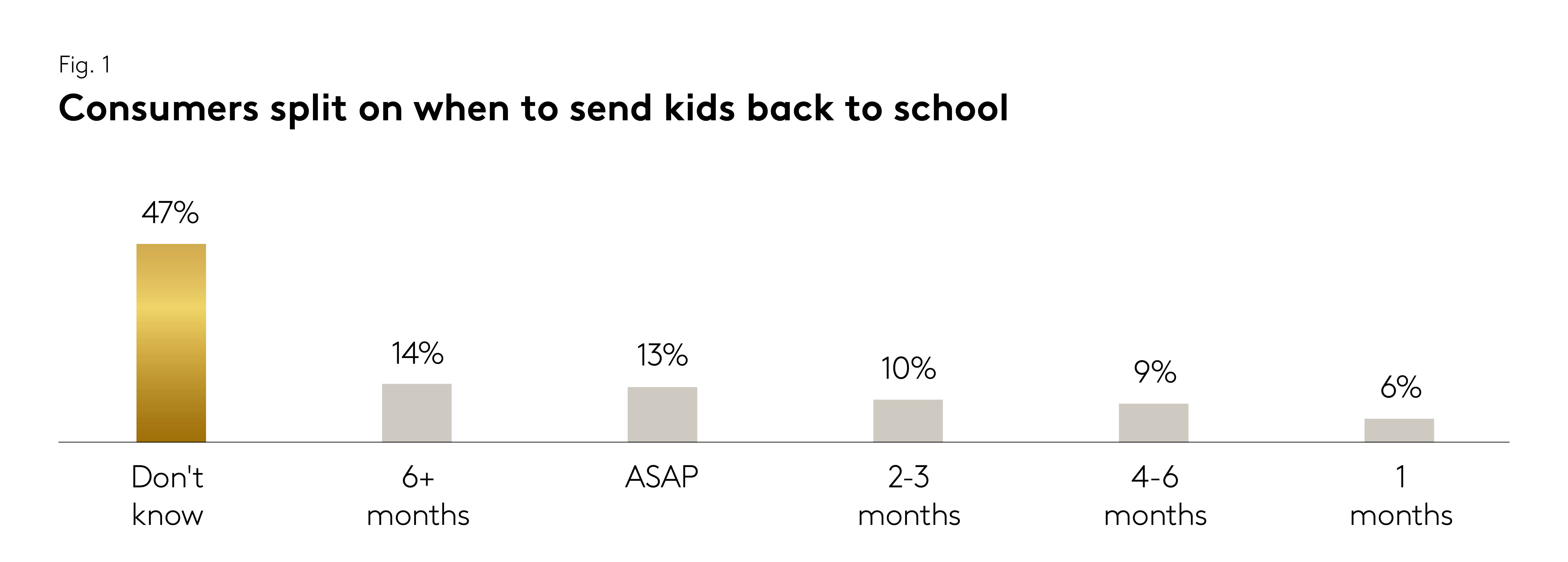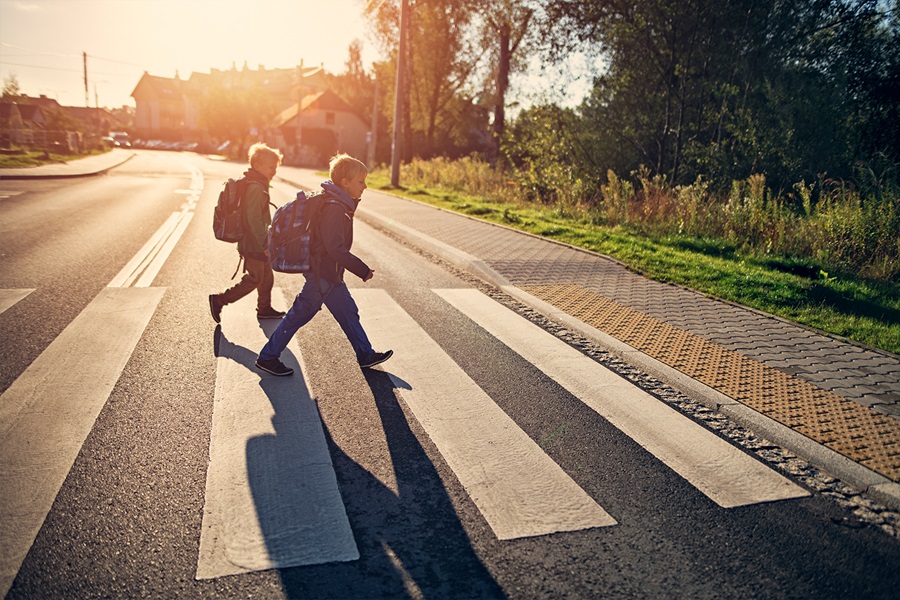Amid the resurgence of the coronavirus, local school boards across the U.S. have been announcing plans for the 2020-2021 school year, with little consistency or consensus on which approach to take. While some school districts are starting with remote learning, others are welcoming children back to school full time or are employing a hybrid system of online and in-person learning. Kantar set out to answer where consumers stand on the issue and what the implications are for brands.
(Dis)Comfort sending kids back to school
Just as there is no consistent plan across school districts, consumers are split on when kids should return to class as well. While 13% of consumers are comfortable sending children back to school “as soon as possible”, 14% want to wait more than 6 months, and 25% fall somewhere in between one and five months. Perhaps reflecting the dilemma inherent in this critical decision—weighing the benefit of in-person education with the risks of contracting the virus—nearly half of all consumers said they simply didn’t know.

Reasons to wait
Of those who wanted to wait to send kids back to class, more than a third cited the safety of their child or others as the main reason, while 17% said it was for their own personal safety. The third most-cited reason was a feeling that it would be “irresponsible” to send kids back during the pandemic, which was selected by 13% of consumers.
Precautions needed to return
Consumers are resolute on changes they would need to feel safe returning to normal daily life, including school, restaurants, and travel. The top three responses suggest that messages from the nation’s health experts are sinking in with the public: 44% of consumers said continued social distancing was necessary to return to normal, while 43% said a requirement that everyone wear face masks is needed and 40% said regular sterilization.
Lessons for brands
Consumers’ readiness to return to normal will be fractured and staggered, with different individuals feeling more comfortable in differing stages. Understanding the readiness of these consumer segments—and the underlying needs and sentiments behind their decisions as they change over the next several months —will be critical in order for brand managers to time their marketing correctly.
With regard to back to school, brands will need to demonstrate they are here to help families make the adjustment to this unusual start of the school year by supporting them in whatever their learning environment may be. For families with kids who will be attending class online, this will mean additional broadband connectivity, computers, monitors and headsets, and even workstations, desks and ergonomic chairs.
Notably, there may be little uniformity in which models are adopted from a geographic standpoint, as school districts are taking different approaches. Brands will need to take this into consideration and develop messaging that encompasses all scenarios, especially as they may change throughout the 2020 school year.

